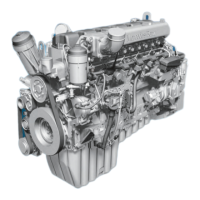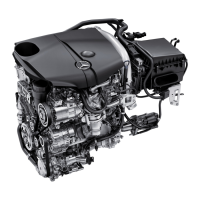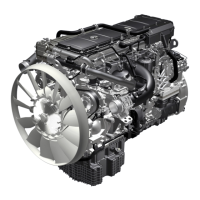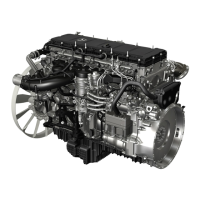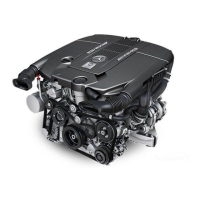!
Make sure that the poly-V-belt contact
surfaces are not damaged (e.g. torn), oily
or glazed, as this could cause the poly-V-
belt to slip. Do not run the engine without
a poly-V-belt.
Otherwise, the alternator and
coolant pump are not driven, which results
in engine damage.
Further information can be found in the
“Checking the poly-V-belt for wear”
(Y page 66) and “Replacing the poly-V-belt”
sections (Y page 97).
Electronic engine control
The electronics warning lamp must go out
after the engine has started.
Example: electronics warning lamp
If the electronics warning lamp does not go
out, or if it lights up while the engine is run-
ning, there is a malfunction in the electronic
engine control system.
Each malfunction
is stored in the system with
its own fault code. Temporary faults are also
stored.
Fault codes can be read using the Mercedes-
Benz diagnostic tester STAR DIAGNOSIS or
minidiag2 (Y page 8). If the electronics warn-
ing lamp lights up while the engine is running,
read or determine the fault code.
Oil pressure
!
Once the
operating temperature has been
reached, the engine oil pressure may not
drop below the following values:
R
2.5 bar at rated speed
R
0.5 bar at idling speed
If the oil pressure falls below these values,
stop the engine and trace the cause.
Operating restrictions with on-highway
applications
The electronics monitor:
R
the display, level and quality of the
AdBlue
®
/DEF reducing agent
R
the efficiency of the catalytic converter in
accordance with the permitted thresholds
for nitrogen oxide emissions (NOx).
Requirements for vehicles
The engine output can be automatically
reduced
the
first time the vehicle is stationary
if:
R
the AdBlue
®
/DEF reservoir is empty
R
the permitted thresholds for nitrogen oxide
(NOx) emissions are exceeded.
Torque reduction
If the AdBlue
®
/DEF is used up or if there is a
fault, the indicator lamp in the instrument
panel lights up or flashes. The display also
shows a message. The engine output is only
reduced after a fault is detected and con-
firmed after up to four journeys.
The degree of torque reduction depends on
the vehicle category:
R
vehicles above 7.5 t: torque reduction by
approximately 40%
R
vehicles below 7.5 t: torque reduction by
approximately 25%
Fault in the monitoring system
If a fault is detected in the electronic moni-
toring of the exhaust gas aftertreatment sys-
38
Operation
Driving mode/working mode
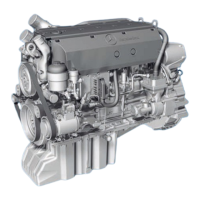
